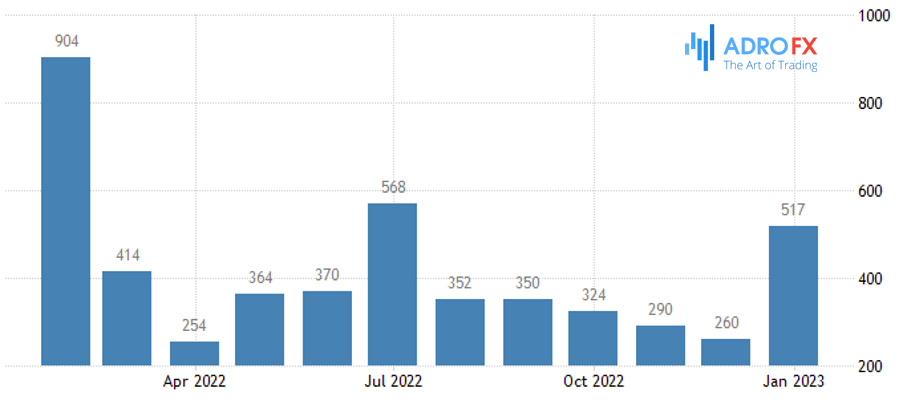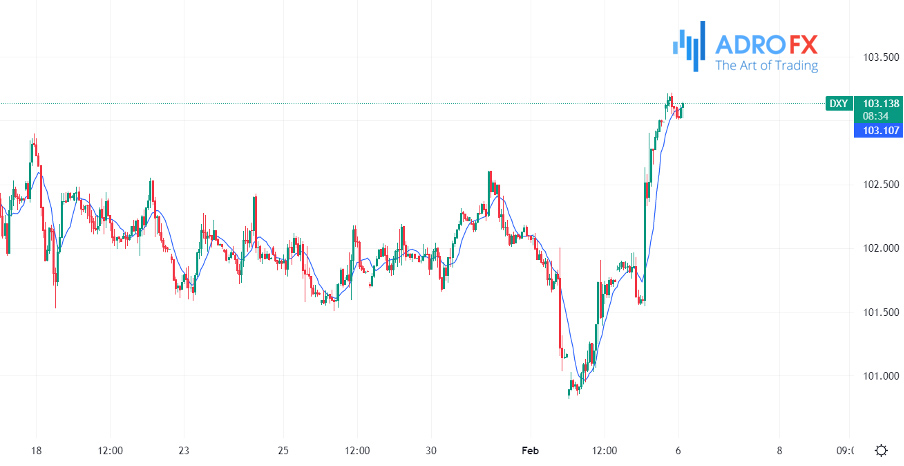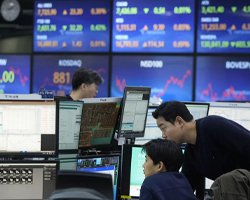Markets Under Pressure After Strong U.S. Labor Market Report | Daily Market Analysis

Key events:
- Australia – Retail Sales (MoM)
- UK – Construction PMI (Jan)
- Canada – Ivey PMI (Jan)
- Eurozone – ECB President Lagarde Speaks
Global market sentiment on Monday morning could be characterized as negative, fueled by growing tensions between the U.S. and China and an earthquake in Turkey.
In Asia, the leading platforms are declining by 1.4%. The exception is the Japanese market, which gained 0.6%. Futures on major U.S. indexes continue Friday's trend, losing as much as 0.4%. The closest Brent crude oil futures are pulling up 0.2% this morning, trading just above $80 a barrel.
The important point is last Friday's Non-Farm Payrolls. The U.S. economy created 517,000 new jobs in the first month of 2023, Labor Department data released Feb. 3 showed. This is twice as much as in December (260 thousand), and also almost three times higher than the consensus forecast of economists surveyed by Bloomberg.

The unemployment rate in January unexpectedly declined to 3.4 percent from 3.5 percent in December. Economists had forecast an increase of 3.6%.
The average hourly wage rose 0.3% in January versus December, which was in line with expectations. On a year-to-year basis, hourly wages rose 4.4% y/y. The data were higher than forecast (+4.3% y/y). However, it is worth noting that the December figure was revised upward: in the last month of 2022, wages grew at 4.8% y/y, not 4.6% y/y as previously reported.
The report was certainly strong. However, it seems we should not pay too much attention to the extremely high job growth numbers as January's statistics are skewed by methodology. The statistical office is making many adjustments this month. However, the fact remains that if some Fed officials were worried about the risk of excessive monetary policy tightening, then after this jobs report such concerns should be markedly reduced.
If one could have seen the figures from the report an hour before Jerome Powell's press conference last Wednesday (February 1 the Fed raised the rate by 25 bps to 4,5-4,75%), then the Fed's comments would have looked much more convincing. Powell said at Wednesday's press conference that he thought the labor market situation was still hot and unbalanced. And now we see: the big picture implies that the current state of the labor market is definitely not slowing inflation, but rather that the labor market is accelerating inflation, as opposed to the Fed trying to cool down price pressures by raising rates.
As for money market expectations, the federal funds rate futures market is now 93% likely (82% a day ago) to imply a 25bp rate hike in March. The probability of a May rate hike in the same range is 60% (22% yesterday). The swap market is still considering the probability of a 25bp rate cut by the end of the year.
The Fed, judging by the current set of macro data, has ample reason to raise the rate in March by 0.25% to 5%. Let's just say the Fed's warning that the rate could rise above 5% this year, which the market stubbornly disbelieved, no longer seems like a bluff on the part of the regulator. Earlier we noticed the presence of strong technical signals, showing that the dollar is oversold. Now fundamental factors are added to them. In light of the published report on employment, the market sentiment toward risky assets seems to be overly positive.

Investors might have to take off the rose-colored glasses, which might encourage the dollar to continue its corrective strengthening. Treasury yields, supporting the U.S. currency, rose along the entire length of the curve on Friday. Yields on 2-year notes added 16 bps to 4.26%, while yields on 10-year Treasuries rose 13 bps to 3.52%, rebounding from the 200-day Moving Average line below which they have not fallen since December 2021.










